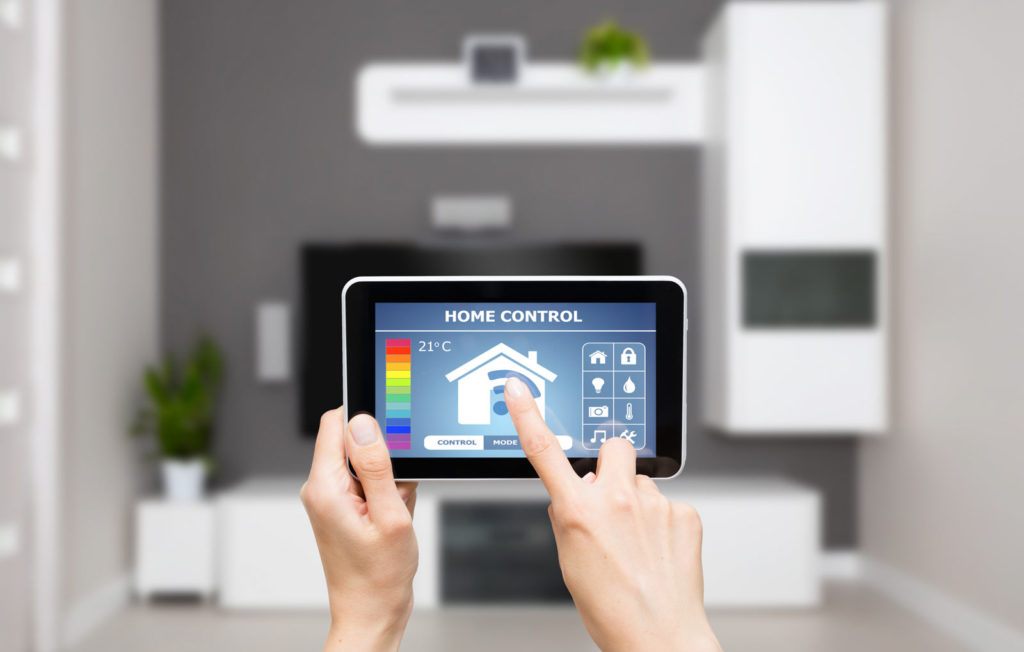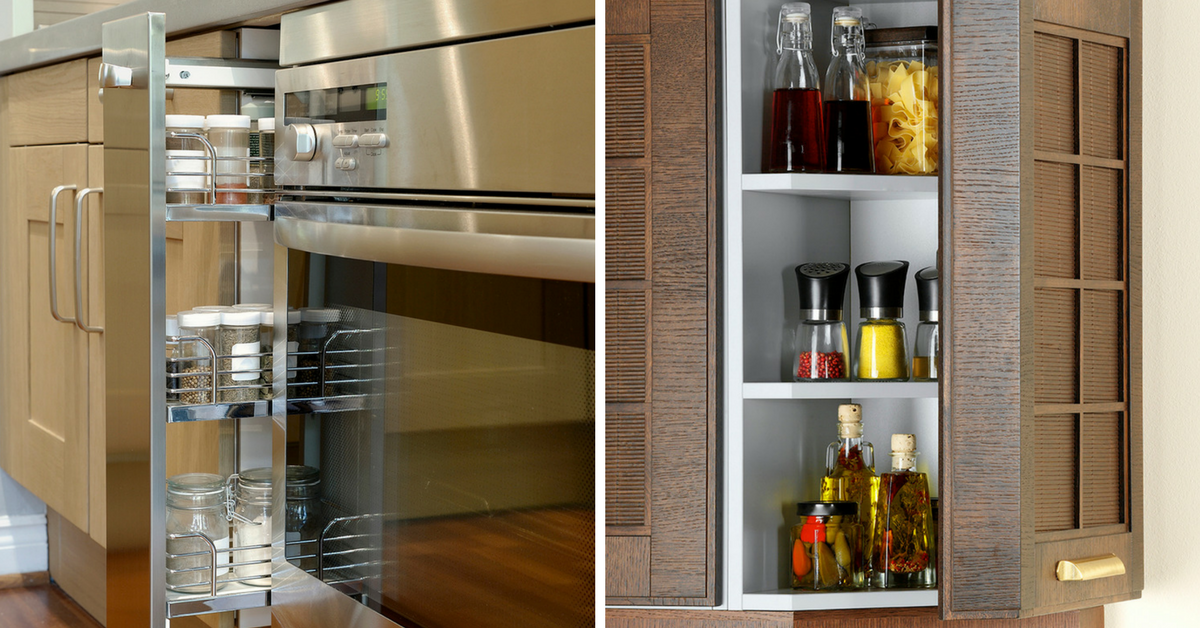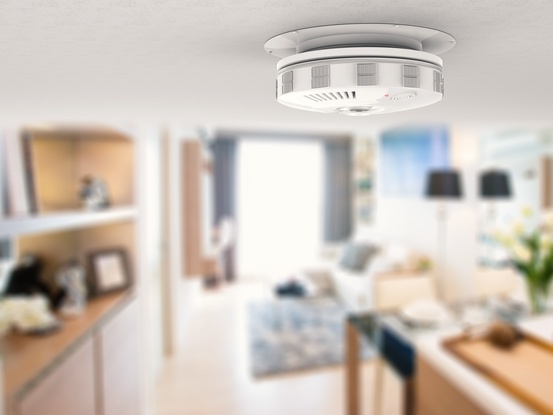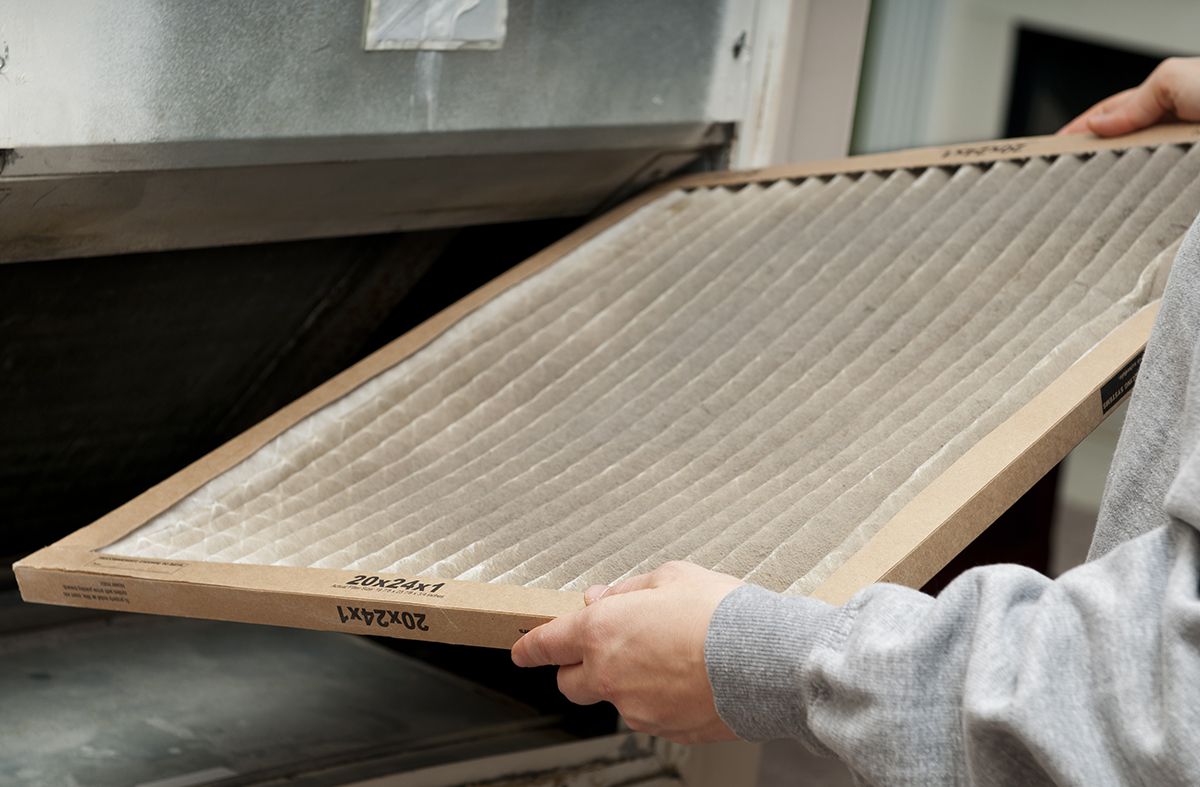Author Archives: 2010admin

HVAC is usually one of the biggest energy consumers in any home or business. So with technology constantly evolving to help these systems become more effective and less wasteful, knowledge is power (literally). So check out the latest HVAC technology trends worth following for a smarter, more efficient home.
Zoning Systems
Say goodbye to the days of household rivalries started by “who turned up the thermostat?!” Now, one system can be controlled by multiple thermostats in individual areas of a home or building. With a Zoning System, the ductwork features a series of dampers to provide various temperature zones throughout your home. So instead of heating or cooling the entire space at all times, you can adjust only the rooms you’re using to meet your comfort needs, while reducing energy use from 20-40%.
Dual Fuel Heat Pumps
Heat pumps are a much more energy-efficient alternative to a traditional AC. By using electricity to move the heat between your home and outside, Dual Fuel Heat Pumps allow you to take advantage of two types of energy in order to maximize the benefits of each. For cooler settings, the pump will use low-cost gas for power, and when temperatures rise, it switches to electricity, generating up to 4x the energy it uses to save you significantly in the long run.
Geothermal Heat Pumps
While not exactly a new technology to the HVAC scene, Geothermal Heat Pumps are being used by more and more homeowners because of the energy-saving benefits they provide. By utilizing the consistent heat from the ground through underground tubing, the unit transforms cold air into heat during the winter months. In the summer, the ground is used as a heat sink to remove the heat to produce cold air. It can also produce hot water, which makes it a pretty all-in-one piece of technology – a quality that’s very consistent with today’s technology trends.
Thermally Driven AC
With a shift toward renewable energy leading the latest trends, Thermally Driven AC is at the forefront, operating on solar energy and incorporating natural gas whenever more power is needed. During the summer months, electricity costs peak for homeowners while traditional AC units are running their hardest. Since Thermally Driven chillers are fueled by natural resources, you’ll reduce this demand on your Power-Grid and avoid costly spikes. And since this system features fewer moving parts, it tends to have longer lifespans than most electric AC units.
Movement-Activated AC
When your air conditioning runs constantly, it’s most likely cooling when you don’t need it to. By eliminating this unnecessary output, you’ll save energy and reduce your carbon footprint. But you can’t constantly adjust the thermostat all day long. So a Movement-Activated AC system does it for you. Through the use of sensors hung from the ceiling, the system can detect when someone is in the room and know to kick on. When the room is empty, the air shuts off automatically, saving you big on utility bills.
Home Automation
There was a time when we could only dream of our popcorn making itself, so you didn’t have to miss your favorite part of the movie. Now, home automation is making it all a reality. Through apps and remotes, we can control our security, lighting, appliances and more from anywhere to make our lives easier and more efficient. Engineers are working overtime to get HVACs into the home automation game in a big way, so we may not be far from managing our units with a tap of our mobile device.
To learn more about the newest HVAC technology or find out which systems are best for your home, contact our expert technicians today.

Even if being eco-friendly isn’t your top priority, we have a feeling you like to save money on your home utilities. And the truth is, they’re usually one in the same. A few simple switches in your home’s plumbing, heating, and cooling, can help you eliminate the anxiety of your upcoming monthly utility bills while also helping you save the environment. Here are five easy, eco-friendly solutions for your home to get you started.
1. Upgrade Your Thermostat
If you’re still using an older thermostat, you could be wasting a lot of excess energy. It’s time to consider a programmable thermostat. They’re fairly easy to replace on your own, and make life much easier once you have one. Forget about making yourself notes to lower the temperature setting before you leave the home or getting frustrated when you forget. Instead, you can pre-set your ideal temperatures on a timer, so you can just adjust it once and then forget about it, saving you energy and keeping you comfortable all season long.
2. Review Your Weather Stripping
Did you know that 7-12% of your home’s heat is lost due to insufficient weather stripping? This process of sealing the cracks and openings in your windows and doors can eliminate unwanted drafts from leaking into your home. Weather stripping is easy to do very inexpensively. Pay a little now to make sure everything is sealed and save a lot in energy costs in the long run.
3. Eco-friendly Bathroom Fixtures
Not all bathroom upgrades have to be super costly; especially eco-friendly ones. Start with an aerator – an inexpensive gadget that restricts water flow from faucets and shower heads to help reduce your water use. For perspective, an 8min shower uses an average of 136 liters of water each time, so making the switch to an aerating head will use far less water and energy, while still maintaining the power of your shower. Automatic faucets are also a great way to reduce your water consumption. While it seems like an easy task to turn off the water while brushing our teeth, most of us don’t. For the kids’ nightly bedtime routines and your pre-work morning rituals, automatic faucets help force you to be eco-friendly without having to think about it.
4. Clean Your Drains with Different Products
Drainage pipes are an essential part of your home, consistently working all day long to maintain smooth water flow and remove waste. Because of this reason, they need to be cleaned every 4-8 weeks. While most homeowners will rely on off-the-shelf cleaning products, many of these conventional drainage solutions will contain sodium hydroxide, a toxic man-made chemical that’s harmful to the environment. The good news is that there are a number of eco-friendly cleaning products out there that cost just about the same as conventional cleaners. Check out Unique Natural, Biokleen or Home Solv at your local stores.
5. Schedule Regular Maintenance
Regular HVAC tune-ups are one of the most important things you can do for your heating system. Dust and debris, as well as leaves and dirt, can clog up both indoor and outdoor units, increasing friction and inhibiting the ability to run efficiently. It also makes it more prone to operational issues that require costly repairs or replacements. During a routine maintenance check, a certified HVAC technician can advise you on the necessary actions to help minimize your energy consumption and heat your home inexpensively.
For more tips on how to make your home’s plumbing, heating and cooling systems more eco-friendly or to learn more about our solutions, contact our experts to discuss your specific needs today!

It doesn’t always require a full remodel to get the kitchen you want or need. Sometimes it’s just a couple refreshes that can make all the difference! If you ask us, the very best upgrades are ones that help you get organized too. So if you’re looking to take your kitchen to the next level or simply get a little more organized, here are a few great ways to maximize your kitchen space and freshen up your look!
- Replace dull hardware.
Simply by replacing cabinet knobs, door handles, or light switches can really give your kitchen a fresh look. Like switching up your classic style of brass or nickel knobs to a rustic edge with copper or wood will give your kitchen a whole new vibe without spending a fortune. - Identify your food prep space.
As you’re laying out your new kitchen, determine which space will be used for most of your big food preparations. Make sure cabinets in this area will have everything you need for cooking and baking like measuring cups, colanders, etc. while your counter space is large enough for multiple cutting boards, mixing bowls and lots of ingredients! - Extend Your counterspace.
Speaking of counter space, does it feel like you don’t have enough? Extend your counters by building a few extra shelving supports or using decorative corbels to lengthen existing countertops or islands. You can really never have enough. - Keep items within kids’ reach.
Lower storage is great for items that the kids will use regularly. By keeping all their bowls, utensils and even snacks (maybe not junk food though) within their reach, you won’t have to hear “mom, can you get this for me” multiple times throughout the day. - Keep pots and pans low.
Any other lower cabinets and drawers are best used for pots and pans. You don’t want to have to pull large, awkward items like these out from over your head. Categorize by skillets, pots with lids, and sauté pans, so you know exactly where to find what you need. - Build cabinets around appliances.
This may require a little more work, but the payoffs are worth it. If you have freestanding appliances or extra space surrounding your refrigerator or oven, build custom shelves around these appliances to take advantage of vertical storage. It’s not only super useful, but also looks really sophisticated when used for wine or a nice china collection. - Take note of your kitchen’s prime real estate.
Basically this means the cabinets closest to your dishwasher. These are key for your most usable items like plates and cups. Trust us, it will make emptying the dishwasher so much less daunting. You’ll want to make sure these cabinets are conveniently within reach. - Incorporate open shelving.
Open shelving is not only the perfect way to add more storage space without knocking down any walls, but also for showing off some of your more unique or decorative items. Any extra wall space is perfect for a few built-in shelves to store fine china or decorative bowls and plates. You can also get creative with the lighting on these shelves as well to make them even more of a focal point. - Add rolling shelves.
A deep cabinet is great for additional storage, but the downside is having to basically take everything out to reach items in the back. Instead, install some rolling shelves with low sides to make use of all that deep storage in an easier, more sensible way. - Install a pot rack.
Vertical storage can be a real lifesaver, especially for big bulky pots and pans that take up so much space. Adding a pot rack above your center island, sink or counters is a great way to store all those items without wasting a ton of cabinet space. Plus, it makes grabbing what you need while cooking so easy! - Consider a rolling ladder.
Ceiling height cabinets are always a great idea in theory, but when it’s time to try and access them, it’s a whole different story. The solution: a rolling ladder! Not only super stylish, but incredibly functional in helping you reach those high storage spaces. - Use the right tools.
Just like rolling shelves, that means having other products that help you access your kitchen items quickly and easily. Like vertical organizers to store larger, stackable items like baking sheets and cutting boards, cabinet risers, pan dividers, or turntables that make finding items in the back of cabinets a lot easier.
The kitchen is the hub of your home, so you shouldn’t just like the way it looks, but you should like the way it works too! But all the storage space in the world won’t help if you’re not organized, so by finding the right mix of aesthetic and functional upgrades, plus a little organization on your part, you can fully enjoy all your kitchen has to offer. For more information on how to maximize your kitchen space, contact our experts to discuss all your needs.

Here’s a startling statistic: While 94% of homeowners know that their furnace can release deadly carbon monoxide gas, only half of them will take the simple step to prevent that from happening. Are you one of them? With the result being thousands of carbon monoxide poisoning hospitalizations and deaths in the US every year, it’s hard to find a reason not to take the extra precaution to be sure your home is safe. Here’s everything you need to know about potential Carbon Monoxide in your home.
What is Carbon Monoxide?
Carbon monoxide is known as the “silent killer” due to its lack of color, taste, smell or sound. The toxic gas is a by-product of the incomplete combustion of fossil fuels such as gas, oil, coal, and wood used in broilers, furnaces, engines, open fires and more. If exposed to it, you may initially experience flu-like symptoms, nausea, loss of balance or fatigue.
Where Does Carbon Monoxide Come From?
In addition to your furnace, Carbon Monoxide can enter the home in a number of other every day home appliances that burn fuel. If these items are not installed or running properly, they can emit the gas into your home’s air. The most common of these appliances are:
- Gas space heaters
- Chimneys
- Generators & other gasoline-powered equipment
- Automobile exhaust in attached garages
- Gas stoves
How to Prevent Carbon Monoxide In Your Home
Simply having your furnace checked regularly by a qualified and registered professional can catch any potential for a Carbon Monoxide leak before it becomes dangerous. Most manufacturers will typically require an annual tune-up of your heating system to sustain its warranty. It’s also highly recommended to have a carbon monoxide detector outside of every bedroom or sleeping area. And if your home has fuel-burning appliances on more than one floor, then you should have a detector on each floor as well.
Other ways you can prevent Carbon Monoxide in your home:
- Do not try heating your home with gas ranges or ovens.
- Make sure every room is well ventilated and the vents are not blocked.
- Have chimneys and flues swept regularly by a professional..
- Do not leave a gas-powered motor running in a garage, such cars or lawn mowers.
- Do not use a generator within 20ft. of a vent, door, or window.
- Have the exhaust pipe in your car serviced every year.
The simplest, most effective way to prevent Carbon Monoxide in your home is by checking the most common source. With a simple furnace maintenance check each year, you can get the peace of mind that your family is safe with the added benefit of ensuring your equipment is running as efficiently as possible. Contact our heating and cooling experts for answers to any questions you may have about your system or have your furnace checked today.
Source: https://www.serviceexperts.com/blog/carbon-monoxide-in-your-home

A lot that goes into a fun night of entertaining friends and family. There’s food and drinks to buy, places to be set, rooms to clean, and playlists to be made! But more importantly, there’s the quality of your indoor air to maintain. This factor is often overlooked, but studies consistently show that indoor air quality is 5x more polluted than outdoor air. So in order to be the hostess with the mostess, here are a few tips for maintaining your home’s indoor air quality and comfort when entertaining:
Get Your HVAC Checked
While you’re making calls to schedule the caterer and DJ, give your contractor a ring to come out and take a look at your HVAC. The last thing you want is an air flow emergency in the middle of your party. Ensure all your equipment is working properly before the big day so you can breathe easier… literally.
Increase the Airflow
Airflow is a key component of good indoor air quality. If it’s a nice day, open up some windows and doors to remove stagnant air and refresh the air inside your home. If it’s too brisk or windy, or you’re entertaining in a room like the basement, turn on ceiling fans or set up a standing fan or two. They may not add much to your party decor, so you can always run them until guests arrive before stashing them away.
Clean Your Sheets, Cushions & Curtains
The only thing affecting your indoor air quality more than poor ventilation are hidden dust mites. They often linger in the fabrics of your home, such as your bedding, curtains, and cushions. Give these items a good pat down before cleaning them with a low allergenic washing soap. And try to keep furry friends off sofas and beds until after the party’s over.
Light a Few Candles
Disclaimer: for this tip, not just any candle will work. In fact, most scented candles will actually pollute indoor air with toxic chemicals, while also irritating guests with allergies or asthma. Beeswax candles are a totally different story, however, possessing air purifying qualities. Like the way in which many purifiers work, beeswax candles release negative ions which counteract the positive charges that dust, pollen, dirt and other pollutants contain. Plus, they’re all-natural and smell amazing!
Replace the Furnace Filter
When that scheduled maintenance rolls around, they’ll tell you whether or not your furnace filter needs to be replaced. Or you can simply check for yourself. A replacement will help you decrease the amount of mold, dust and other junk being blown into your home, while also helping your furnace run more smoothly to maximize your airflow and save you money.
Use Natural Cleaning Products
Cleaning your home is always on the pre-party checklist, but some products actually harm your air quality as you clean. Take a look at labels before you start tidying up to make sure you’re using natural soaps and products that won’t release any harsh chemicals into the air and leave an unfavorable residue. Or simply head to the kitchen to try lemon and vinegar solutions that leave no carbon footprint whatsoever!
Add Some Greenery
Not only do houseplants add a nice, comforting ambience to your home’s decor, but they also help remove toxins from the air- and add oxygen, of course. Any type of plant will help do the trick, however, some are better than others. Here are the top five plants to add to your party shopping list:
- Bamboo Palm (Dypsis lutescens)
- English Ivy (Hedera helix)
- Gerbera Daisy (Gerbera jamesonii)
- Janet Craig Dracaena (Dracaena deremensis ‘Janet Craig’)
- Red Edged Dracaena (Dracaena marginata)
Somewhere between deciding on the party menu and downloading new songs for the playlist, you’ll want to make sure you check off these important must-dos to maintain and improve your indoor air quality. These few simple changes will leave your home feeling so comfortable and inviting, your guests may never leave! (you’ve been warned.) For more information on how to improve your home’s air quality, contact us to chat with one of our experts today.


